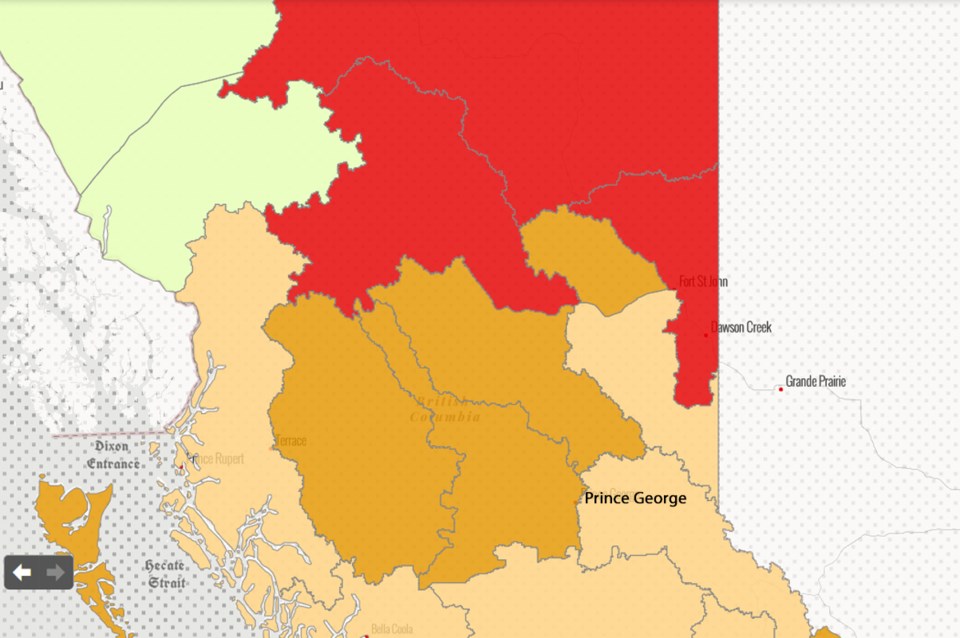The provincial government is urging residents and businesses to conserve water as drought conditions are seen throughout much of northern B.C.
Currently there are Level 3 drought conditions in the Parsnip and Upper Fraser West basins immediately west and north of Prince George. Level 2 drought conditions are reported in the Upper Fraser East and Middle Fraser basins east and south of the city.
“While the recent rains have provided relief for some regions in B.C., it has not been enough to overcome the limited rain and precipitation from previous months,” the provincial statement issued on Friday said. “The increased flows that are present in some streams and river systems are likely to be shortlived.”
British Columbia ranks drought levels from zero to five, with drought Level 5 rated as the most severe with adverse impacts being almost certain.
Level 3 drought conditions mean that adverse effects from droughts are possible, while Level 2 drought conditions mean adverse effects are unlikely.
Elsewhere in northern B.C. Level 4 drought conditions are reported in the Finlay, Fort Nelson and East Peace basins, including communities like Dawson Creek and Fort St. John. Adverse impacts are likely in Level 4 drought conditions. Level 3 drought conditions are reported in the North Peace, Bulkely Lakes and Haida Gwaii basins.
Drought level 2 and 3 conditions are seen in nearly all parts of the province.
“Everyone is responsible to do their part to conserve water and reduce the risk of negatively affecting the environment and other water users,” the statement said. “If conservation measures do not achieve sufficient results and drought conditions worsen, temporary protection orders under the Water Sustainability Act may be issued to water licensees to support drinking water for communities and avoid significant or irreversible harm to aquatic ecosystems. Provincial staff are monitoring the situation and working to balance water use with environmental flow needs.”
Residents can do their part by:
- Limiting outdoor watering, including lawns, and not watering during the heat of the day or when it is windy.
- Consider planting drought-tolerant vegetation.
- Reduce personal water use by taking shorter showers, and only doing full loads of laundry and dishes.
- Do not leave taps running.
- Install water-efficient shower heads, taps and toilets.
The latest information about drought conditions in B.C. can be found on the B.C. Drought Information Portal online.



